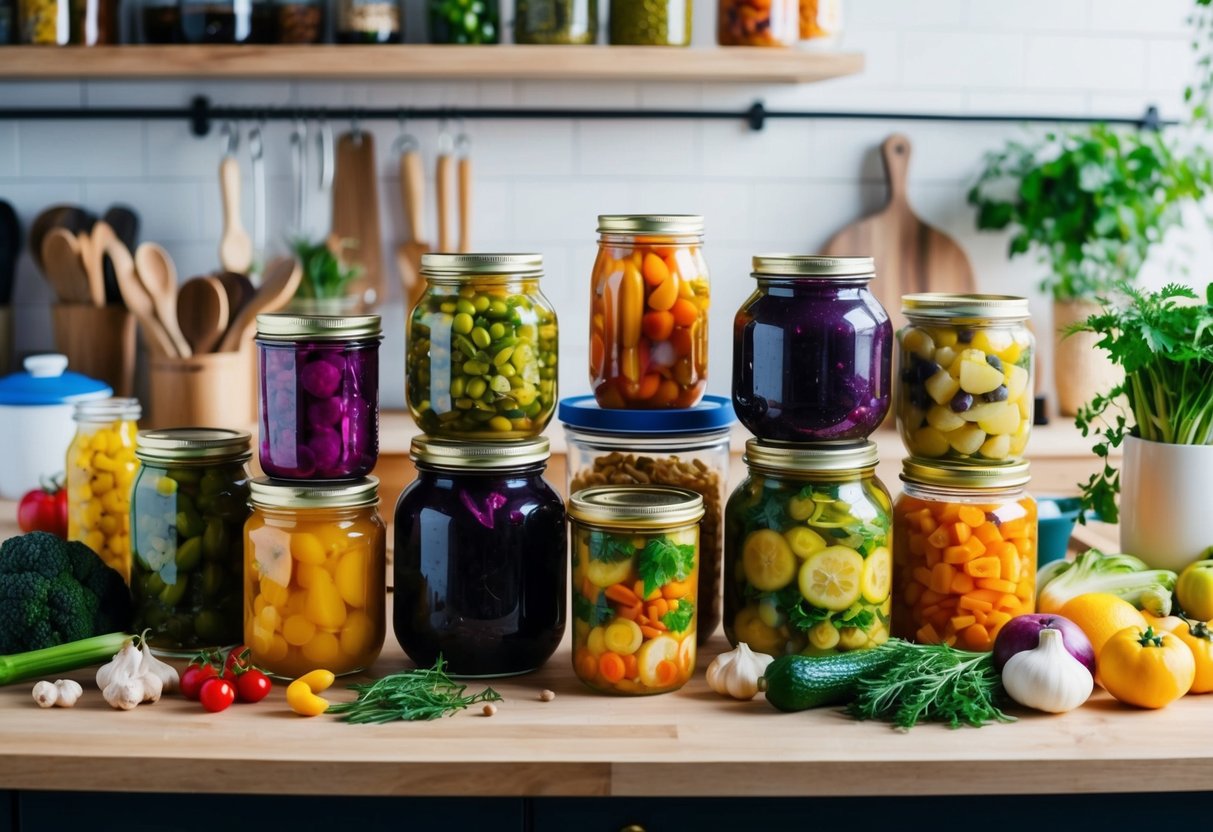DIY Fermented Foods: Enhance Gut Health and Immunity at Home
A Guide to Homemade Fermented Foods

Homemade fermented foods offer a range of health benefits and can be created in a home kitchen with essential ingredients and simple techniques. These foods improve gut health and boost the immune system, creating a delightful addition to any diet.
Preparing Sauerkraut at Home
Making sauerkraut involves fermenting cabbage in its own juices. Start by shredding cabbage thinly and adding salt to help release the juices needed for fermentation. The salt amount should be about 2% of the cabbage weight.
Mix the cabbage and salt well, then pack it tightly into a clean jar or crock. Ensure the cabbage remains submerged in its juices to prevent spoilage. Cover with a clean cloth or lid and let it ferment at room temperature, checking daily for taste and progress. It usually takes around one to four weeks, depending on the desired flavor and texture.
Crafting Your Own Kombucha
Kombucha is a tangy, effervescent tea made from fermenting sweetened tea with a Symbiotic Culture of Bacteria and Yeast (SCOBY). Begin by brewing black or green tea, adding sugar, and allowing it to cool to room temperature.
Transfer the tea to a glass jar, adding the SCOBY and starter tea (from a previous batch or store-bought plain kombucha). Cover the jar with a breathable cloth and secure it with a rubber band. Let it ferment for 7-30 days, tasting periodically. Once it reaches the desired flavor, remove the SCOBY, and pour the kombucha into bottles, optionally adding flavorings such as fruit or herbs before a second fermentation for carbonation.
Making Kimchi from Scratch
Kimchi is a Korean staple, renowned for its spicy, tangy flavor. To make kimchi, start by soaking Napa cabbage in saltwater for a few hours, then rinse and drain it thoroughly.
Prepare a paste using garlic, ginger, chili flakes, fish sauce, and a bit of sugar. Mix this paste with chopped radish, carrots, and green onions. Coat the cabbage leaves thoroughly with the mixture and pack it tightly into a jar. Allow the kimchi to ferment at room temperature for 1-5 days, checking for the taste that suits personal preference.
Cultivating Homemade Yogurt and Kefir
Yogurt and kefir are both fermented dairy products with probiotics. To make yogurt, heat milk to 185°F (85°C) then cool it to about 110°F (43°C). Stir in a tablespoon of yogurt with live cultures, and keep the mixture warm for 5-12 hours to thicken.
Kefir involves mixing milk with kefir grains and letting it sit at room temperature for about 24 hours. Once fermented to taste, strain out the grains to reuse for the next batch. Both yogurt and kefir offer beneficial bacteria for gut health and can be made plain or flavored to preference.
Selecting Ingredients for Optimal Fermentation
Choosing the right ingredients is crucial for successful fermentation. Focus on fresh vegetables and incorporate high-fiber foods to encourage beneficial bacteria growth during the fermentation process.
Best Vegetables for Fermentation
Napa cabbage is often a favorite for fermentation, thanks to its crisp texture and slight sweetness. It pairs well with other vegetables like scallions and cucumbers, creating flavorful batches of kimchi or kraut. Scallions add a mild onion flavor, balancing the intense tanginess that fermented goodies often have. Cucumbers, rich in water content, become delightfully crunchy when pickled.
Radishes are another excellent option. They maintain their firmness and add a peppery note. Garlic and ginger bring complexity and a subtle heat, enhancing the overall taste profile. Freshness is key; selecting vegetables at peak ripeness will yield the best results.
